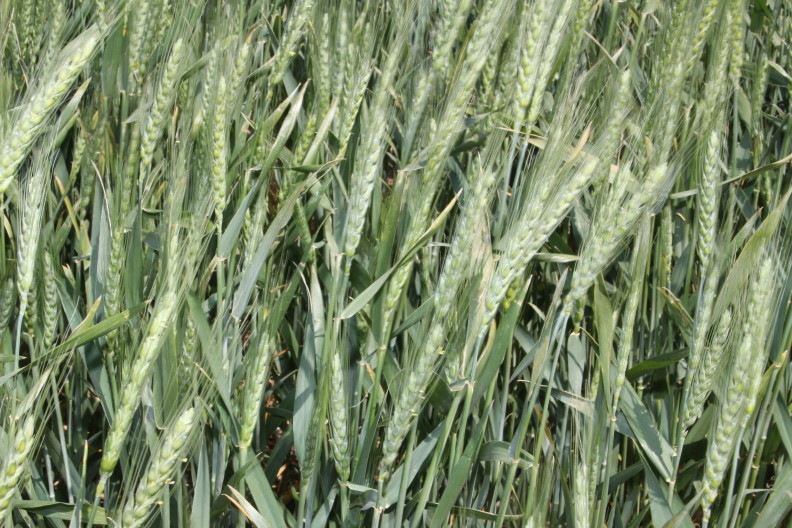
Agricultural News
Oklahoma Wheat Tour Finds Crop Making a Comeback
Wed, 06 May 2015 17:54:30 CDT
 Oklahoma wheat farmers look to be on track to produce a larger than normal wheat crop. The Oklahoma Grain and Feed Association held their 35th annual wheat tour in measuring yield potential of wheat fields. After surveying fields throughout the state, the association is predicting Oklahoma farmers will produce 108.8 million bushels of wheat this year. Their annual tour estimated yields at 27.7 bushels per acre and 3.9 million harvested acres.
Oklahoma wheat farmers look to be on track to produce a larger than normal wheat crop. The Oklahoma Grain and Feed Association held their 35th annual wheat tour in measuring yield potential of wheat fields. After surveying fields throughout the state, the association is predicting Oklahoma farmers will produce 108.8 million bushels of wheat this year. Their annual tour estimated yields at 27.7 bushels per acre and 3.9 million harvested acres.
After several years of drought, this could be best crop many Oklahoma farmers have seen in years. Oklahoma Wheat Commission Executive Director Mike Schulte said there has been some role reversal in the state.
"It looks like right now, as of today, the southern part of Oklahoma is really going to contribute to the success of this wheat harvest," Schulte said. "And northern part because they have been so drought stricken and the panhandle region as well, not going to come on as strong as they normally would."
Crop scouts shared their observations on Wednesday at the 117th annual meeting of the Oklahoma Grain and Feed Association. Scouts found drought stress, insect pressure, weeds and rust. Freeze damage from April 6th also looks to be worse than first thought for the wheat crop in north central Oklahoma with 10 to 30 percent damage. Several crop scouts agreed the lack of subsoil moisture during the fall and winter had a greater impact than the freeze damage.
Since April, Oklahoma has received several rain events. Sporadic rain events have helped bring along the crop in southwest Oklahoma. Gary Strickland scouted 90 fields in four counties in southwest part of the state. He reported the region received 53 different rain occurrences through the month of April. This has helped the region grow the best wheat crop in years. Throughout western Oklahoma, the incremental differences in moisture has made a big impact on yields. Robbie Newman scouted fields in the western portion of the north central region. He called this a "Cinderella crop" as he had never seen a crop turn around like this one. The head of the Oklahoma Wheat Commission agreed.
"It still is amazing with what we have seen, just in the last three - four weeks, with the moisture we have how the crop has rebounded and recovered in a lot of those areas," Schulte said.
While the spring rains have been a blessing, they also limited fertilizer applications and allowed for the development of rust. Scouts reported incidence of stripe rust, leaf rust and wheat streak mosaic. One scout said the cool wet conditions created an ideal environment for a "rust explosion". Because of the ongoing drought, many farmers were caught off guard because they haven't had to apply fungicides for several years. While additional moisture may lay down this crop, farmers won't turn away any moisture hoping they are getting closer to the end of the drought.
Radio Oklahoma Network's Leslie Smith caught up with Mike Schulte at the crop tour meeting. Click or tap on the LISTENBAR below to listen to the full interview.
WebReadyTM Powered by WireReady® NSI
Top Agricultural News
More Headlines...




















